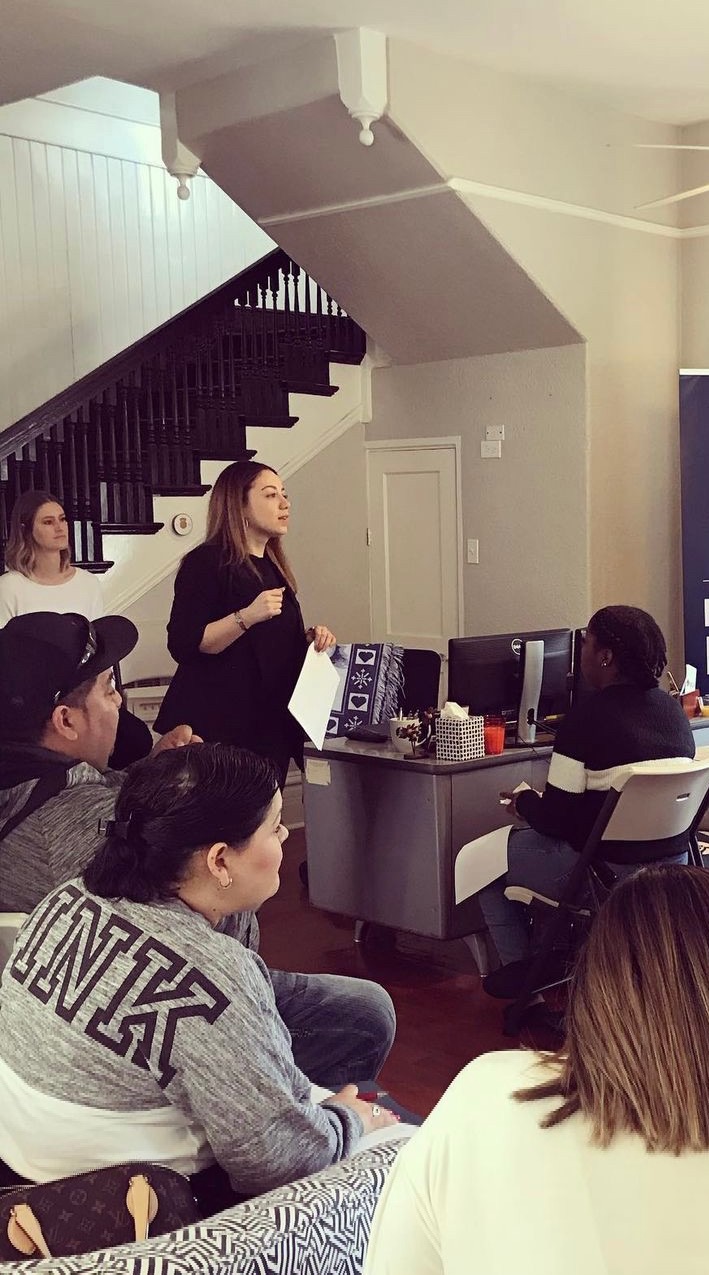 Today we’d like to introduce you to Adeeb Barqawi.
Today we’d like to introduce you to Adeeb Barqawi.
Adeeb, can you briefly walk us through your story – how you started and how you got to where you are today.
The question that has shaped my career to date is, how do we systemically solve root cause issues and not symptoms. In other words, what needs to change in the system to drive social change in a coordinated and more efficient manner? As a country, it is evident that we have become program rich and system poor. Our solution to solving complex social issues has been focused on the proliferation of programs. While programs are important, their proliferation has come at the price of losing sight of the system. As in what infrastructure needs to exist first so that program delivery can be more coordinated and maximized? As a result, services have become duplicated. I draw on this question from two distinct points in my career, one when I was a scientist and second when I was a physics teacher.
I was accepted to college at the age of 15, and given my culture, it was almost a hidden requirement that I would need to become a doctor. I did well majoring in Bioinformatics & Biology, after that, I took a job with a pharmaceutical company followed by completing my master’s in Physiology and Biophysics at Georgetown University followed by a second master’s degree at Johns Hopkins University. As you can see, there was no medical school. I kept delaying medical school as my gut feeling said differently. It felt that medicine was more focused on the symptoms and not the root cause. For example, a patient kept coming back to treat their asthma, when the root cause of their asthma is the mold at the house. I knew that I needed to pursue an entirely different experience in order to shape my perspective, and that is when I found out about a program called Teach for America, a program that places high achieving individuals to teach in America’s most under-resourced schools. Luckily, I was placed in Houston!
As a teacher at Kashmere High School in Houston, I noticed how my capable students were struggling to fulfill their human potential due to academic and non-academic barriers such as hunger and mental health. I had no way to refer students to services in a coordinated way. To this day I recall one of my students Anaya who had her head down in class. When I asked Anaya, what is going on? she answered, “My mom died last night and I came to school to eat”. When reaching out to my school counselor, the counselor was equally stretched thin using antiquated tools like static spreadsheets and business cards to fill the gaps that they saw. I started to ask questions like: How are we identifying the students that truly need the most support? How do we refer and connect them to services? How do we know if we have enough services or what those services are? And lastly, how do we know the impact of the services on student outcomes? At the time, there was no way to answer these questions. This time however I was adamant about doing something about it.
ProUnitas was launched as a non-profit with the fundamental belief that every student no matter their zip code should have access to the right resources at the right time to be successful in school and beyond. ProUnitas’ partners with Houston areas school district student support departments and provides them with the technology tools and implementation support to become more integrated, aligned and coordinated in connecting students to the various external and internal social and health services.
Overall, has it been relatively smooth? If not, what were some of the struggles along the way?
Every new endeavor comes along with various challenges and opportunities. The biggest opportunity/challenge in this work is investing people in the importance of having strong systems so we can maximize the delivery of programs. We really need both! Also, the fruits of this work take years to see, and while we continue to make gains we have to continue to be persistent toward our ultimate goal.
Please tell us about ProUnitas Inc.
ProUnitas’ envisions a day where no student falls between the cracks and is on a mission to ensure every student has access to the right resources at the right time to be successful in school and beyond.
ProUnitas partners with Houston area school district student support departments and supports them with the technology tools and implementation support to become more integrated, aligned and coordinated in connecting students to the various external and internal social and health services.
So, how does ProUnitas support school district student support department in becoming become more integrated, aligned and coordinated in connecting students to various external and internal social and health services?
Integrated: We outfit and train entire student support departments on our platform PurpleSENSE that empowers various stakeholders to more efficiently collaborate around student success. The school nurse, for example, can more easily collaborate with the school counselor and social worker on a specific student. PurpleSENSE provides the process and visual graphic of all supports that are provided to the student. In addition to collaborating, PurpleSENSE helps students support departments digitalize and systematize their referral process. Instead of a paper referral that goes into a box somewhere, teachers and other stakeholders can refer students for services in a more efficient way.
Aligned: We support student support departments in using data to improve and not to prove, through live monitoring of metrics like student attendance. Thus students are more likely to be identified early for support or at the time of need. While there are many platforms out there that can visualize data, what makes this different is in addition to identification, it allows various student support stakeholders to create a flight path for each student and monitor actions. As in what actions were taken once a student has been identified or referred for support.
Coordinated: For each district, we work with, we build them a resource map that allows them to know what services exist on each of their campuses. In addition, the referral system allows districts to access the demand for various services and thus make more informed strategic decisions on additional services needed. By knowing where resources are located the hope is more organizations can collaborate and duplication of services decreases.
By 2024 we envision being nine urban school districts in Houston with a poverty rate greater than 65%, thus creating a continuum of care for students. Over the past four years, we have expanded to four Houston area school districts, impacting more than 300 schools and as a result of this work, more than one hundred thousand students have been connected to much-needed services.
If you had to go back in time and start over, would you have done anything differently?
Absolutely nothing. The journey continues to be humbling, thrilling and rewarding!
Contact Info:
- Address: 2001 Commerce Street.
Houston, TX, 77002 - Website: www.prounitas.org
- Phone: 713-955-5924
- Email: awei@prounitas.org
- Facebook: www.facebook.com/prounitas
- Twitter: https://twitter.com/ProUnitas




Image Credit:
Hayley Dang, Damon Hoyle
Suggest a story: VoyageHouston is built on recommendations from the community; it’s how we uncover hidden gems, so if you or someone you know deserves recognition please let us know here.

















